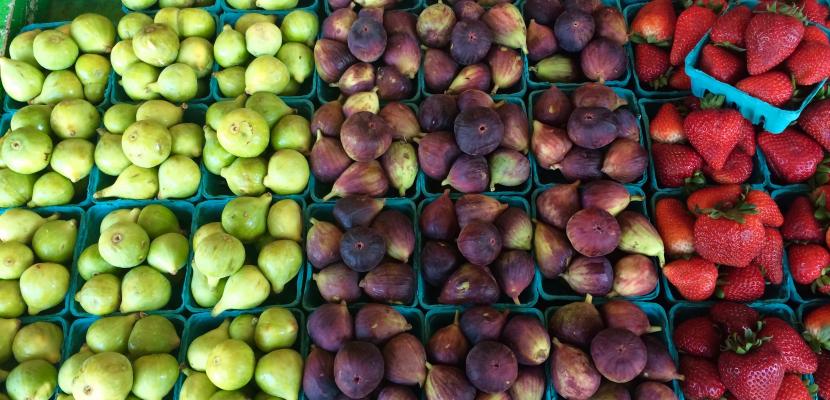Image

Foodhub - Distribution channel for local food
Published on 29 March 2021

Finland
Helsinki-Uusimaa
This is the good practice's implementation level. It can be national, regional or local.
About this good practice
A food hub is a centrally located facility with a business management structure facilitating the aggregation, storage, distribution and marketing of locally produced food products (USDA). Uudenmaan Ruoka gave smaller producers access to markets by reaching out to consumers and restaurants. The project was part of Sitra's key area of circular economy in 2017-2018 and has continued since with different types of project financing.
Uudenmaan Ruoka has ~20 producers/week. Conditions to access the platform are locality, small-scale production and craftsmanship. They have their own pricing model, which can be changed on a case-by-case basis. Producers price and manage their products, and there are no fixed costs for them. The platform fee (which is part of the products price) is visible to the consumer and negotiated with the producer. The fee pays for pick-up, data traffic costs, packaging, etc.
The pick-up points are automated, and they use self-service. Orders are retrieved and acknowledged by logging in with a phone. There is little contact with the products and people, and the cost of shelving is eliminated. With Uudenmaan Ruoka there are ~80 customers/week. Orders are placed by Tuesday and pickups are on Thursday.
The concept was also tested in Kemiönsaari, Southwest Finland. It was the first experiment managed by another organization. The concept was smaller, and they targeted different user groups, but they used the same pricing concept and platform model.
Uudenmaan Ruoka has ~20 producers/week. Conditions to access the platform are locality, small-scale production and craftsmanship. They have their own pricing model, which can be changed on a case-by-case basis. Producers price and manage their products, and there are no fixed costs for them. The platform fee (which is part of the products price) is visible to the consumer and negotiated with the producer. The fee pays for pick-up, data traffic costs, packaging, etc.
The pick-up points are automated, and they use self-service. Orders are retrieved and acknowledged by logging in with a phone. There is little contact with the products and people, and the cost of shelving is eliminated. With Uudenmaan Ruoka there are ~80 customers/week. Orders are placed by Tuesday and pickups are on Thursday.
The concept was also tested in Kemiönsaari, Southwest Finland. It was the first experiment managed by another organization. The concept was smaller, and they targeted different user groups, but they used the same pricing concept and platform model.
Resources needed
Uusimaa model was built with project funding from Sitra and private foundations, SLC-union, Uusimaa Federation & Finnish Agency for Rural Affairs. 4 people part-time, a designer and a person for technical work. Ekompi.net platform. 6 self-service pick-up points.
Evidence of success
There are about 1500 customers on the platform and they make around 80 orders/week. If the pick-up points are compared to the stores and their losses, there is no loss of food from them.
The FoodHub has expanded from its initial project days with the number of producers participating and customers joining the platform. It has been tested outside Helsinki region in Kemiönsaari where initial sales were small but the platform was praised. The main customers in there were leisure residents.
The FoodHub has expanded from its initial project days with the number of producers participating and customers joining the platform. It has been tested outside Helsinki region in Kemiönsaari where initial sales were small but the platform was praised. The main customers in there were leisure residents.
Potential for learning or transfer
The concept is already been tested also in smaller market. It shows the benefits of supporting and building a network of local producers selling their products in shared platform. The concept promotes local food well.
One of the cornerstones of Foodhub is a transparent pricing model, which is shown and broken down just below the product; part of the price goes to the producer, part to FoodHub and part to taxes. This differs from a regular grocery store in that you don’t see how much the producer gets from the product they produce, and how much goes into the store’s own bag. Transparent pricing is a good principle for building trust of customers to the food industry. It also brings up producers to the consumer interface in a new way; the producers can set the consumer price in the service themselves.
FoodHub is an existing brand that has undergone development work through which an image has been created; it helps businesses to profit from the shared brand and platform.
One of the cornerstones of Foodhub is a transparent pricing model, which is shown and broken down just below the product; part of the price goes to the producer, part to FoodHub and part to taxes. This differs from a regular grocery store in that you don’t see how much the producer gets from the product they produce, and how much goes into the store’s own bag. Transparent pricing is a good principle for building trust of customers to the food industry. It also brings up producers to the consumer interface in a new way; the producers can set the consumer price in the service themselves.
FoodHub is an existing brand that has undergone development work through which an image has been created; it helps businesses to profit from the shared brand and platform.
Further information
Website
Good practice owner
You can contact the good practice owner below for more detailed information.
Organisation
Uusimaa Food

Finland
Helsinki-Uusimaa
Contact
Senior Advisor